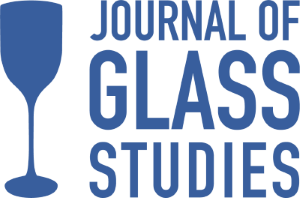Journal of Glass Studies over het glashuis de Twee Rozen, Amsterdam

In het Journal of Glass Studies, nr 66, 04-04-2025, publiceren Jerzy Kunicki-Goldfinger, Michel Hulst en Ian Freestone: Seventeenth-Century Façon de Venise Glass from De Twee Rozen Glasshouse, Amsterdam: Technology out of Step with Fashion?
Als korte samenvatting meldt het Journal:
De Twee Rozen glasshouse was one of the best-known glasshouses in seventeenth-century Amsterdam and an important producer of glass in the Venetian style. It occupied two sites: initially at Keizersgracht, from 1621, it then moved in 1657 to Rozengracht, further from the center of the city. Production debris recovered from a deposit close to the Keizersgracht site were originally attributed to an earlier glasshouse, but a reinterpretation in light of more recent excavations firmly attributes these glasses to the first location of De Twee Rozen. We present 50 new SEM-EDS analyses of vessel glass, moils, trim-offs, unfinished objects, and production waste from the later site at Rozengracht and compare these with previously published analyses from both sites. Several changes in glass technology appear to have been introduced following the change of location. First, a cristallo-type technology, involving the purification of ashes to produce a glass with lower Fe2O3 appears to have been used exclusively at Rozengracht. Thus, the introduction of glass production in the Venetian style was not accompanied by the signature Venetian glassmaking technology, which seems to have followed later. Second, the relatively new method of opacification using antimony was introduced, along with other changes, such as the introduction of lead into the cobalt-blue glass used in polychrome decorative canes. The origins of these new technologies are discussed in particular in view of the presence of the chemist Johann Rudolf Glauber at De Twee Rozen and its direction by a Venetian master, Nicalao Stua, from 1667.
Kijk verder op: https://doi.org/10.3998/jgs.6938
Authors
Jerzy J. Kunicki-Goldfinger (Institute of Nuclear Chemistry and Technology, Warsaw, Poland)
Michel Hulst (Monumenten en Archeologie, Gemeente Amsterdam (MenA), Netherlands)
Ian C. Freestone (UCL Institute of Archaeology, London, UK)
